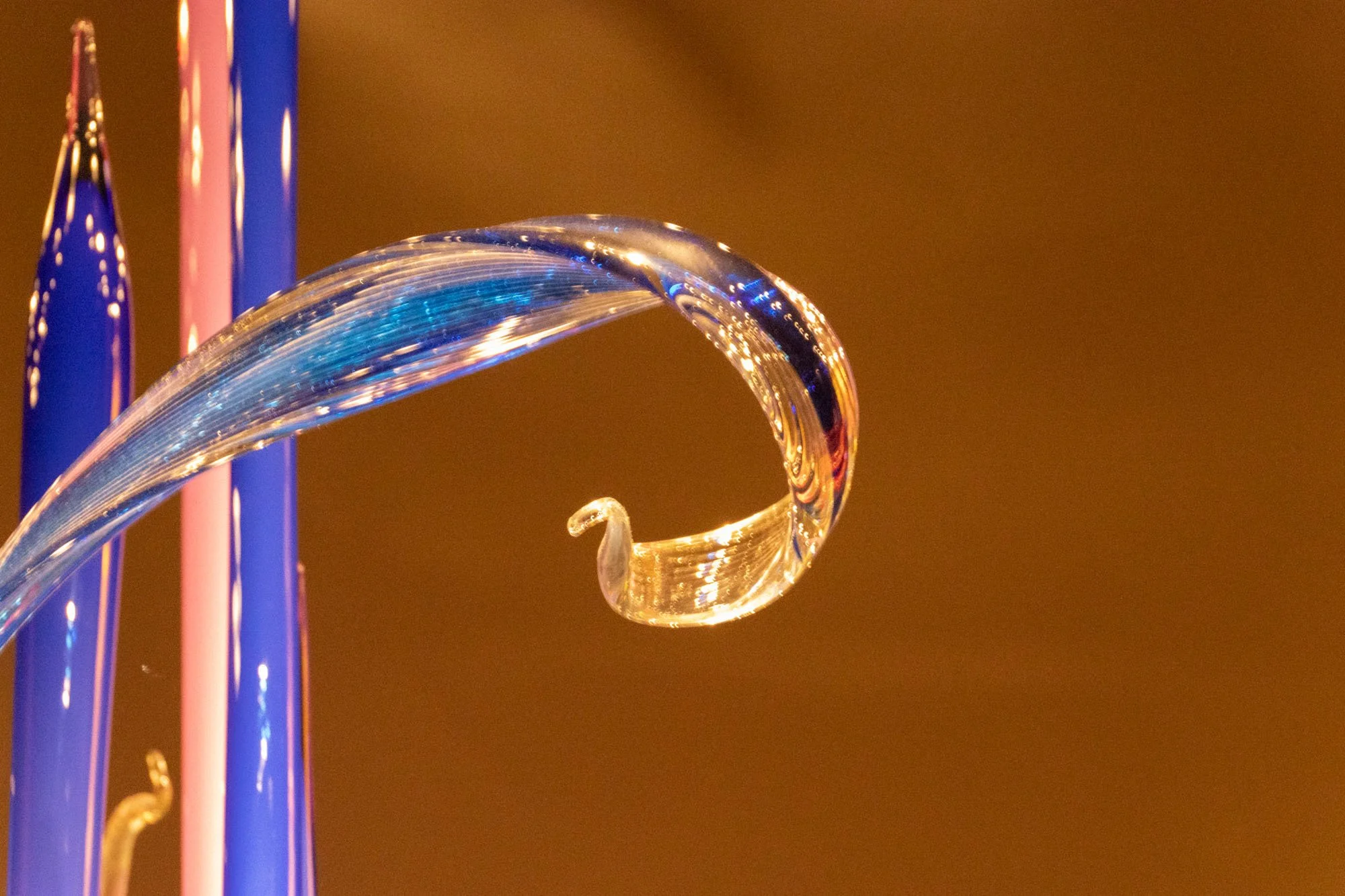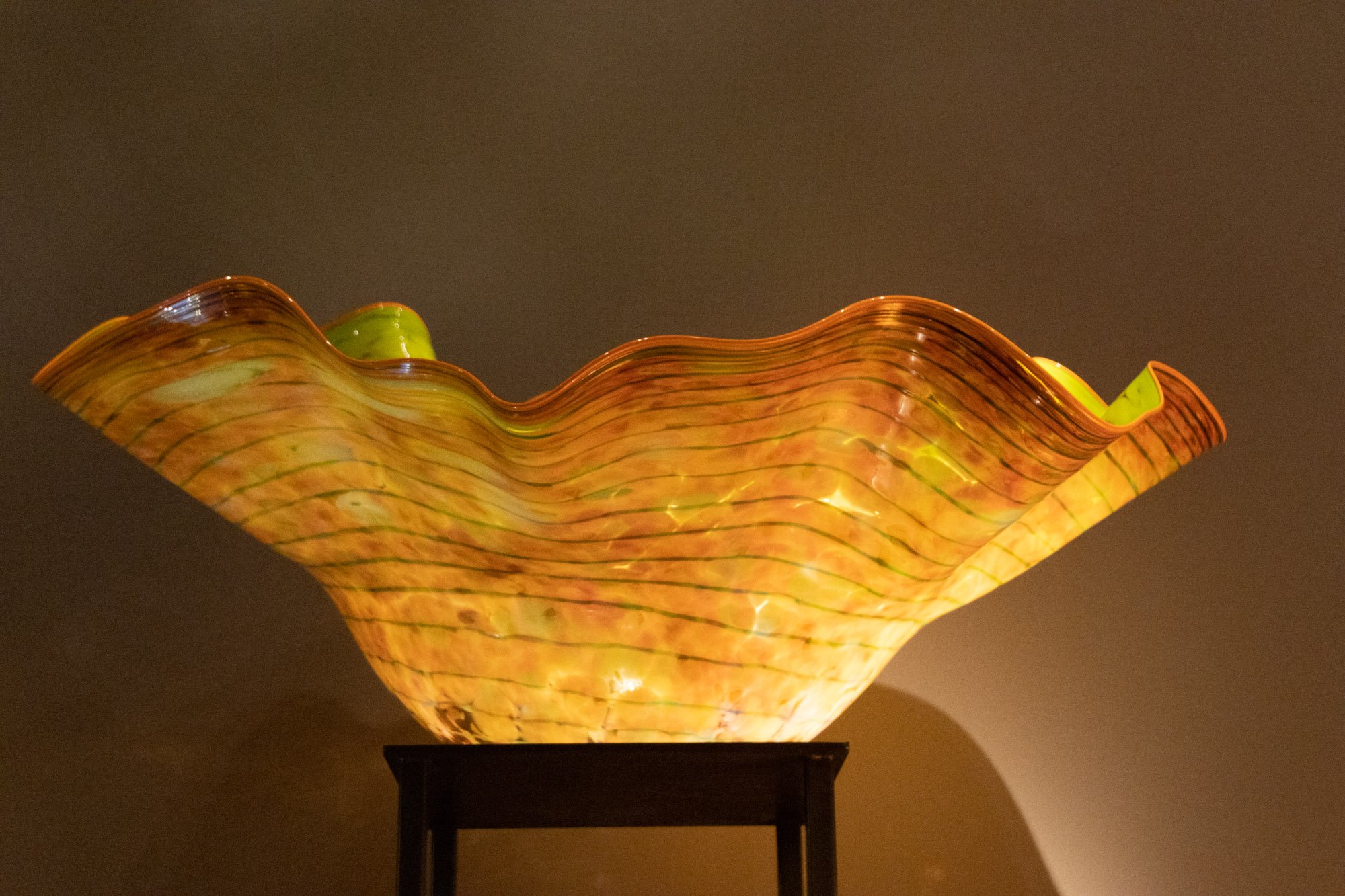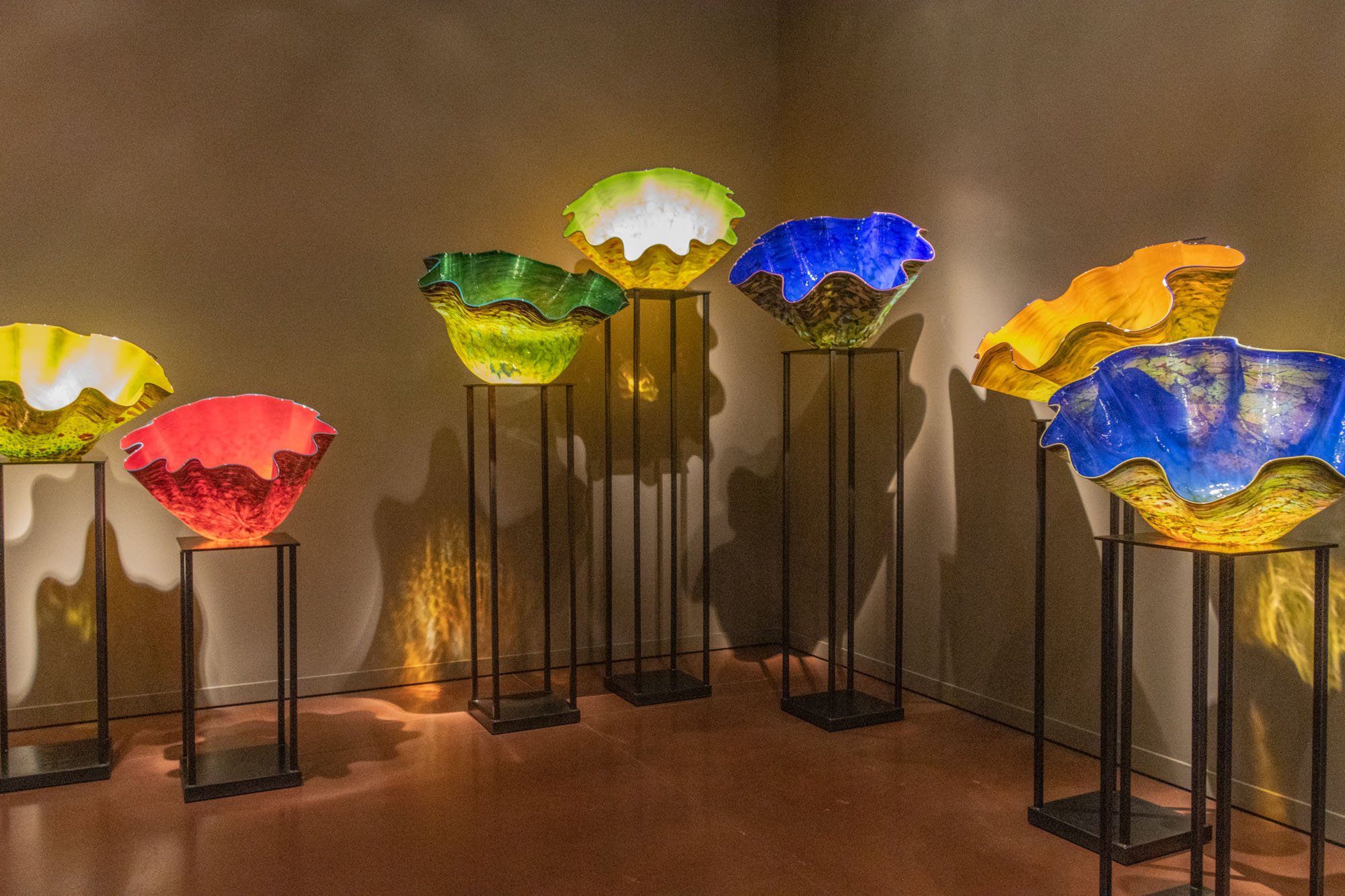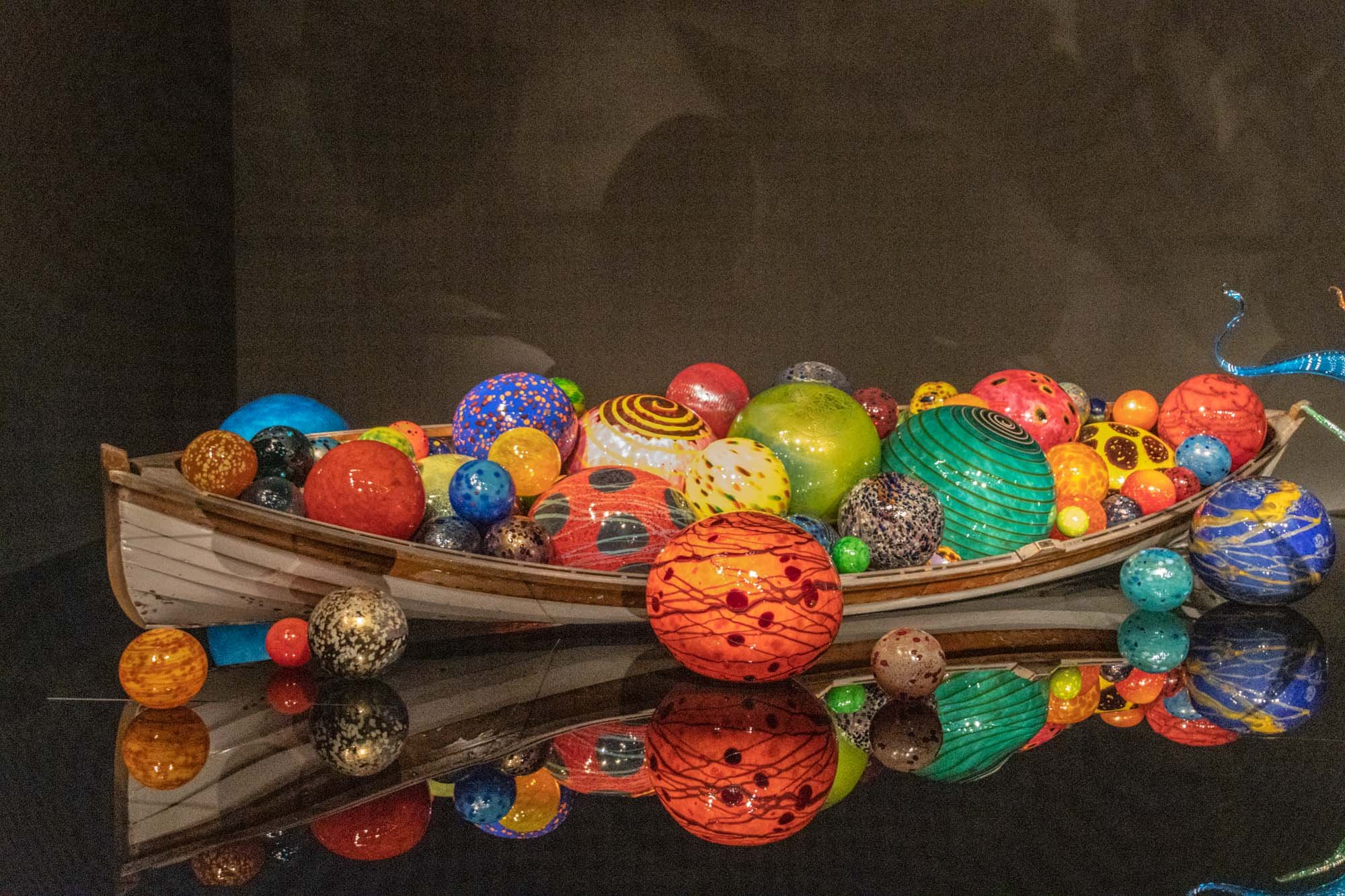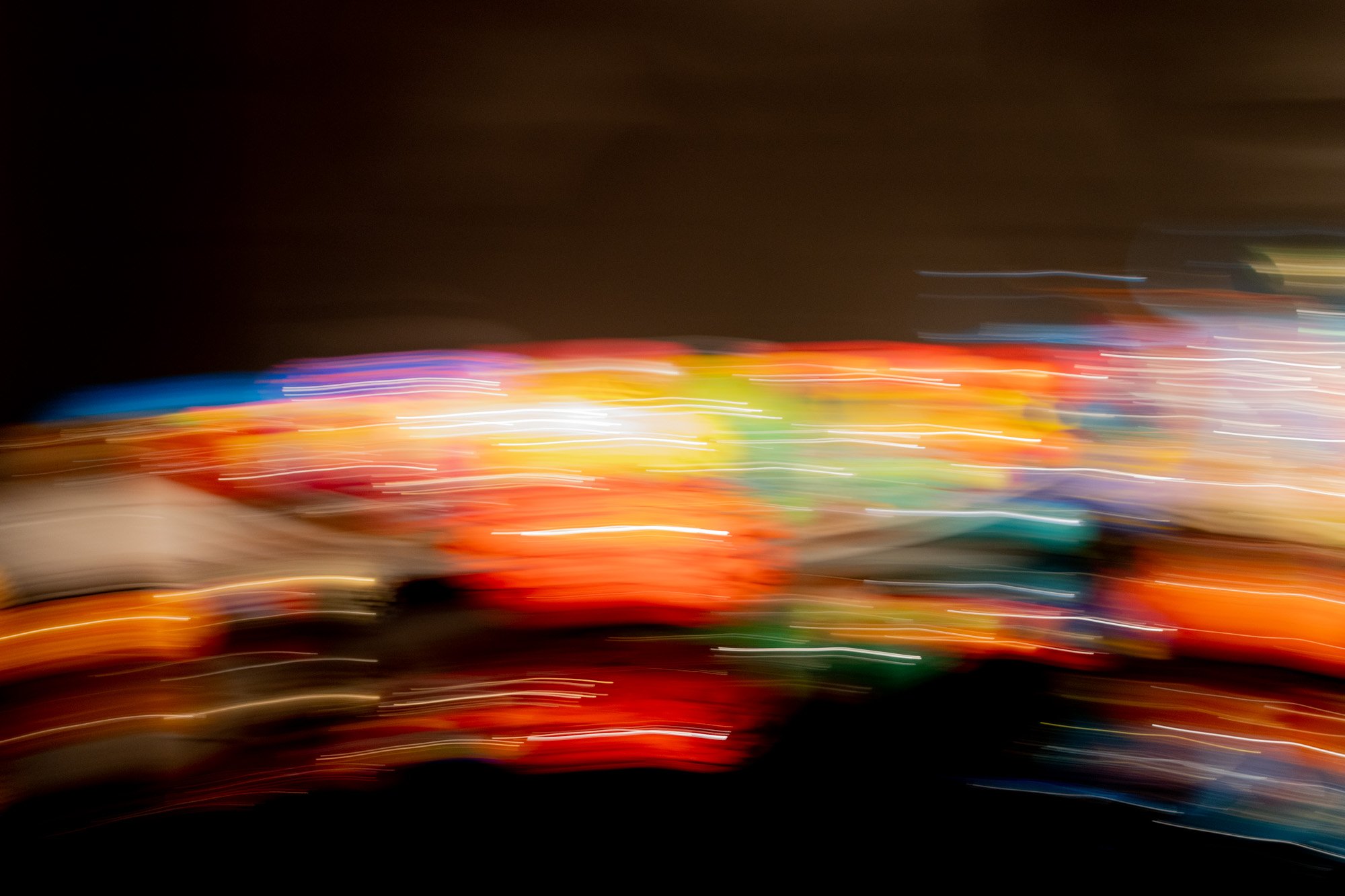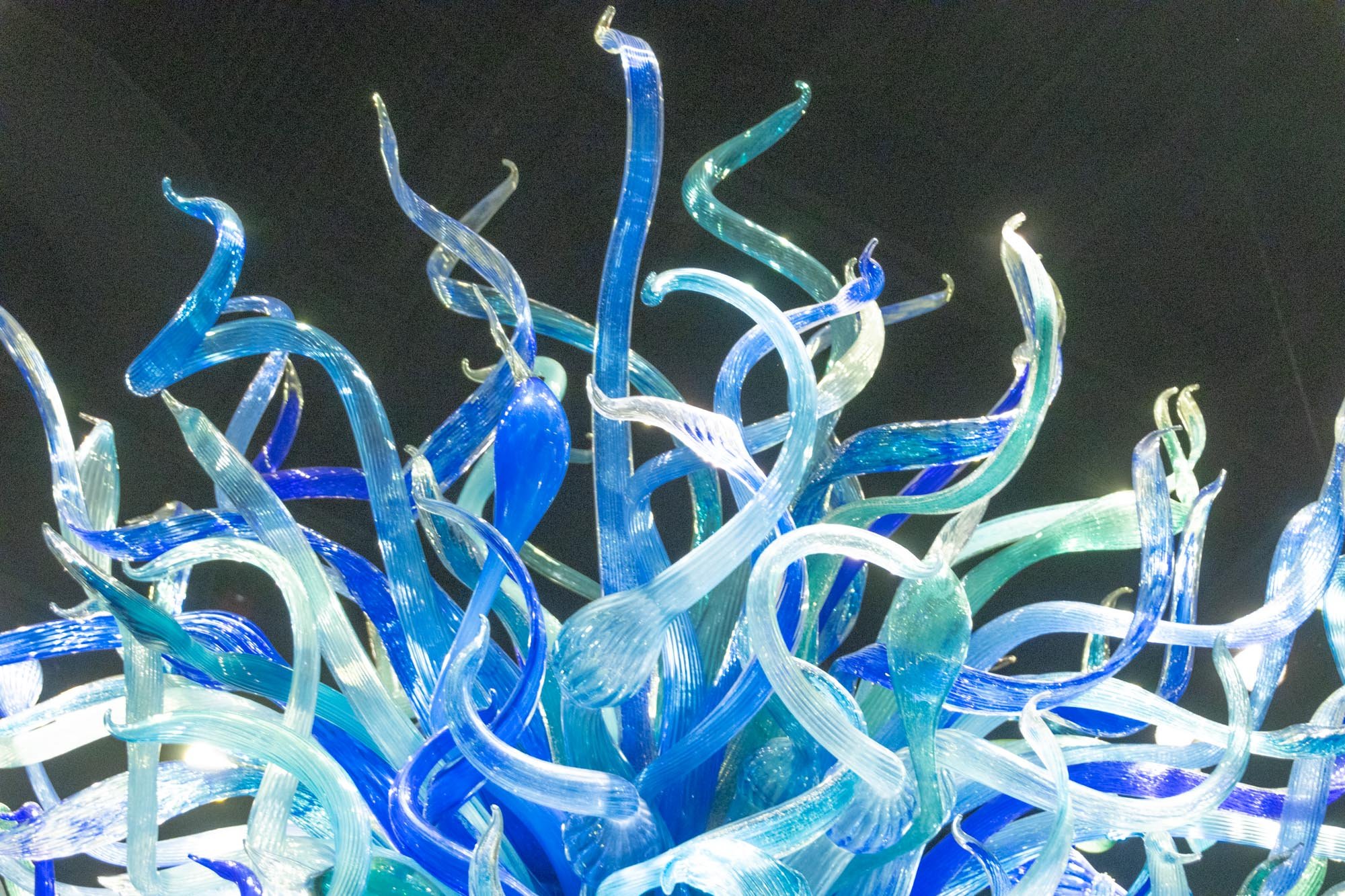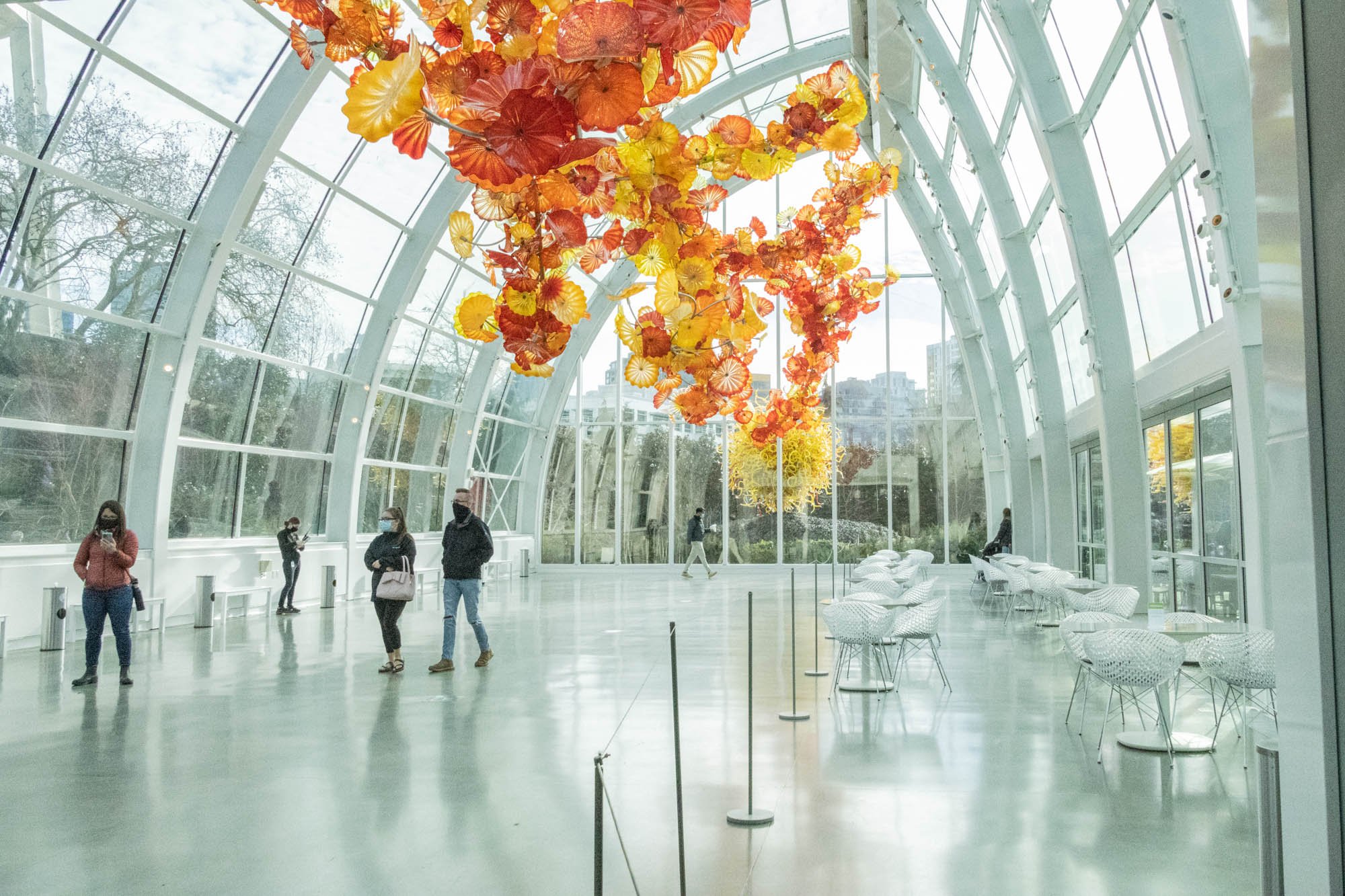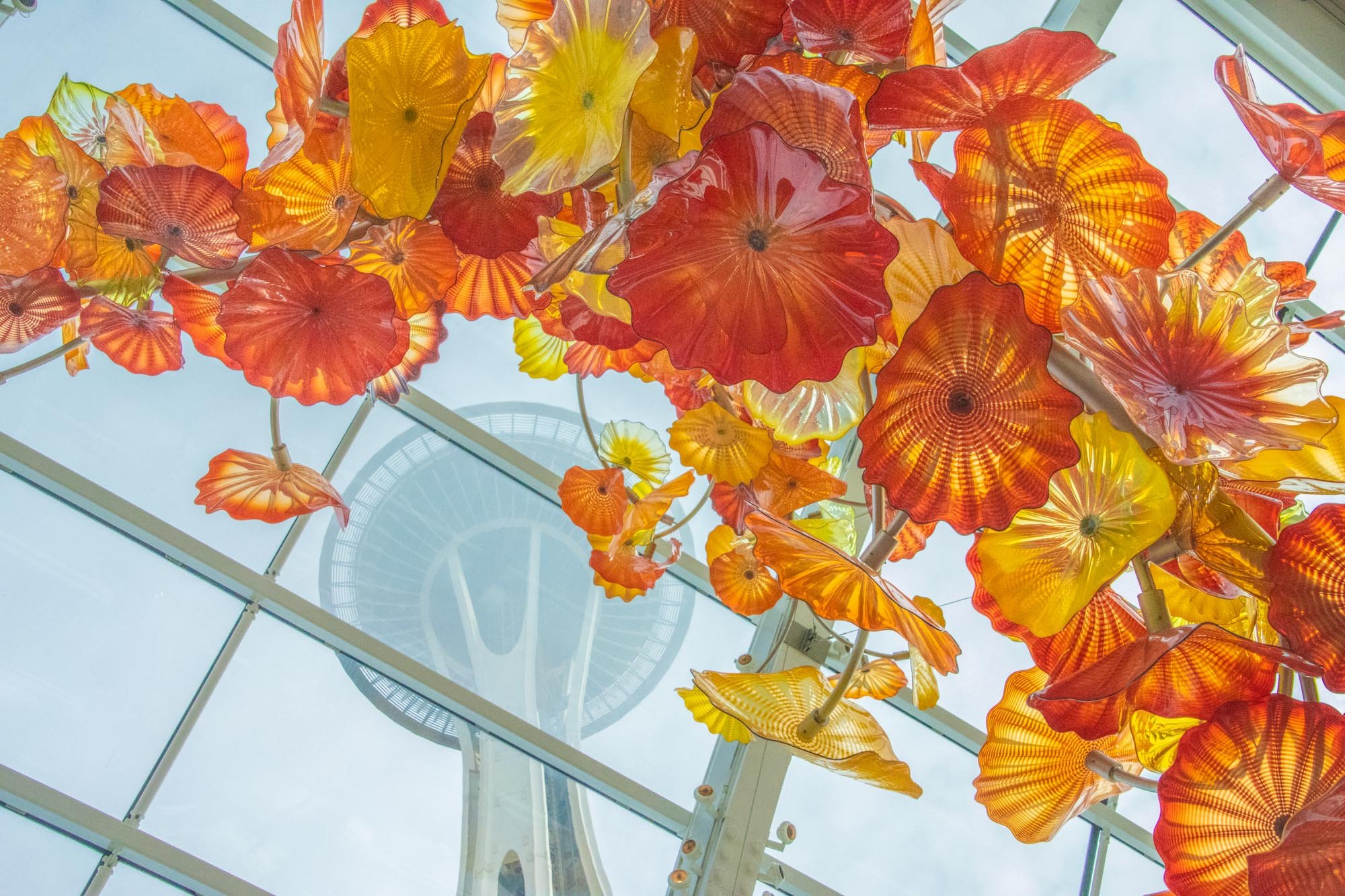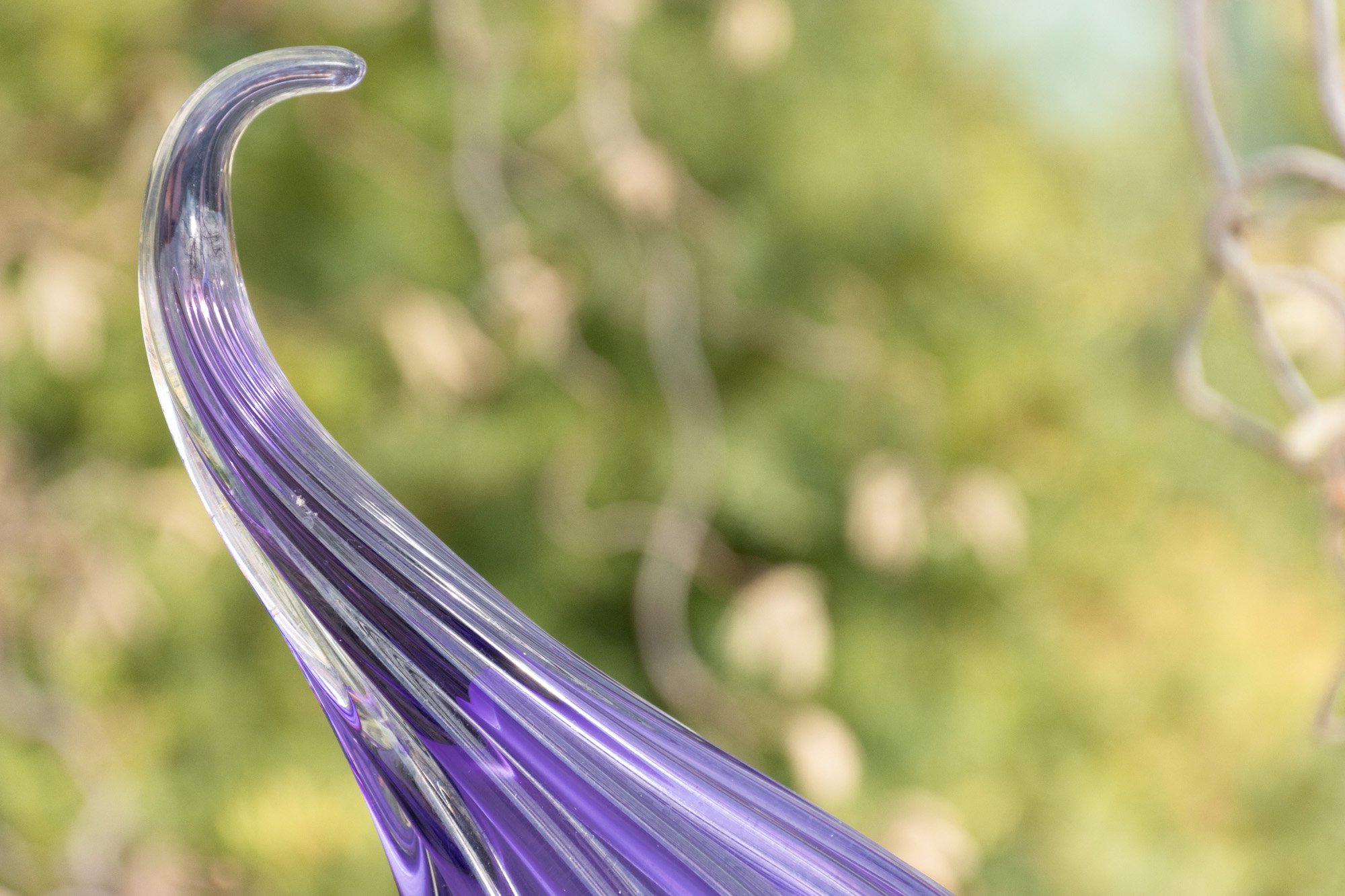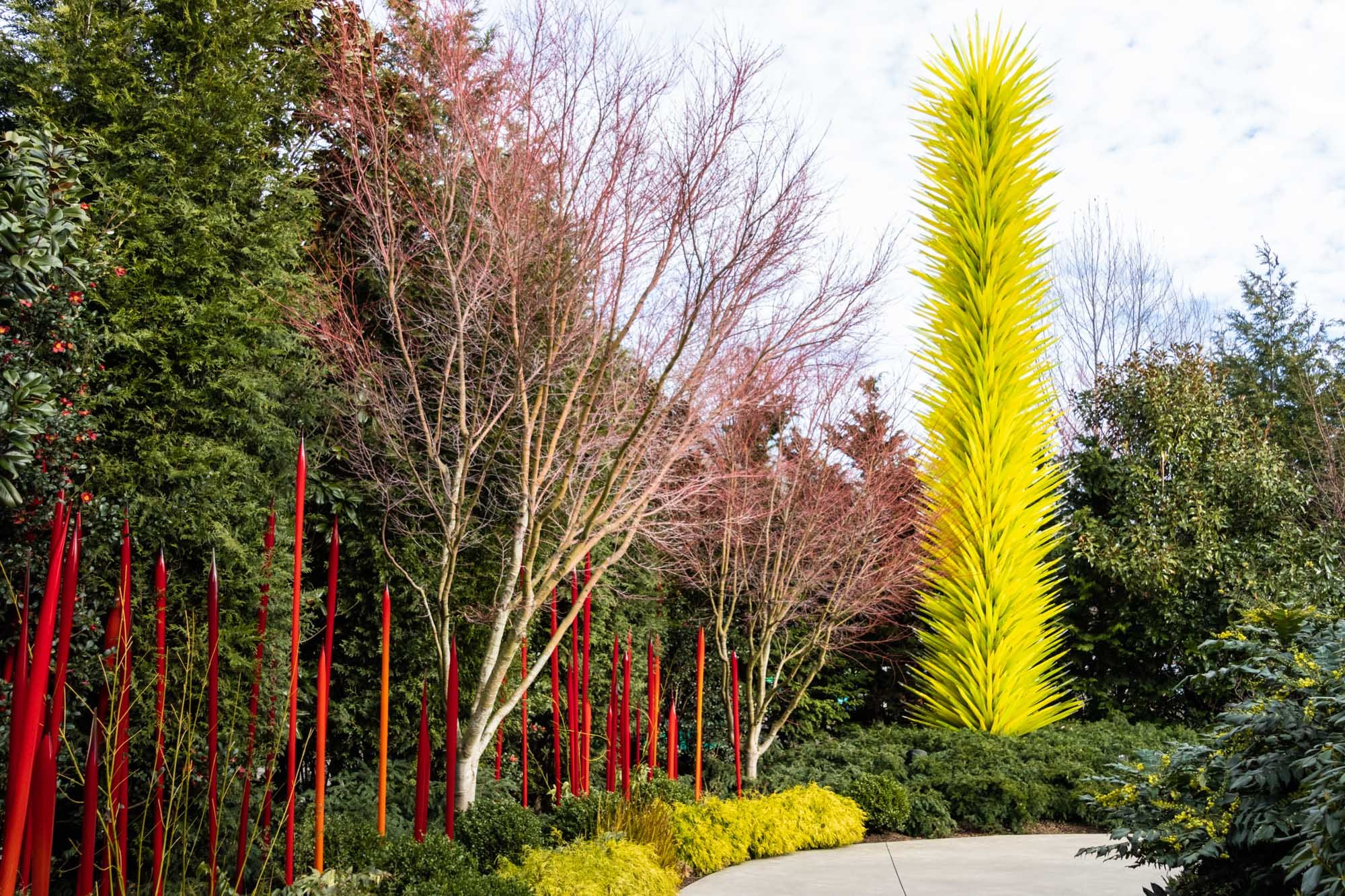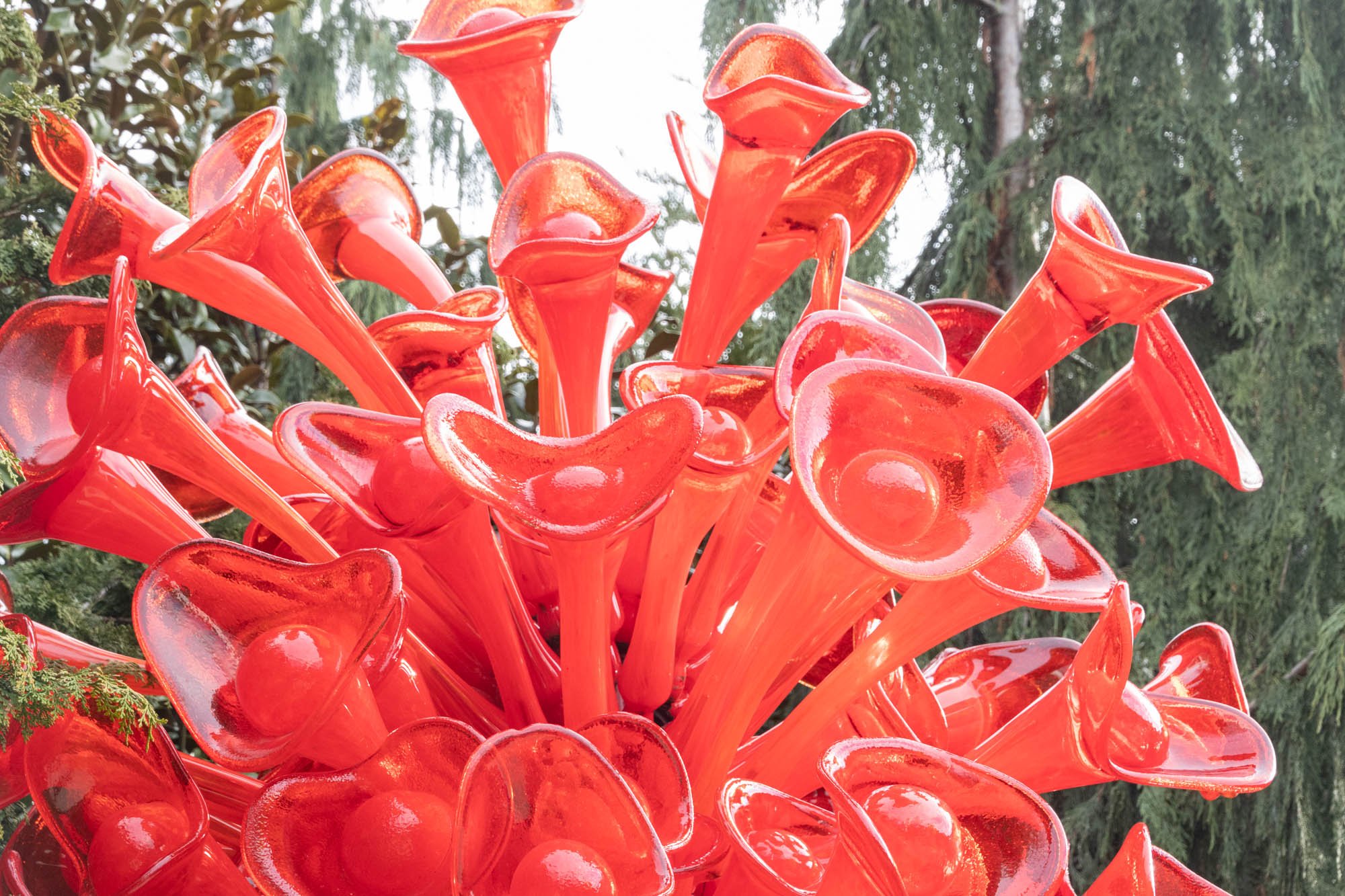Chihuly Garden and Glass
My first introduction to Dale Chihuly’s work was in Jerusalem in 2000 at the Tower of David. The exhibit, called Chihuly in the Light of Jerusalem, was the first in a botanical setting which reflected his lifelong fascination with glasshouses. Since that time, I have visited Pilchuck Glass School in Stanwood, Washington and both Chihuly’s Museum of Glass in Tacoma and the Chihuly Garden and Glass in Seattle, all of which we are fortunate to have in our back yards. Most of my own collection of glass art, that did not include an original Chihuly, was destroyed during the 1991 Nisqually earthquake that vigorously shook the shelving on which it was displayed in my home.
Born and raised in Tacoma, Dale Chihuly has always called Washington State his home. He received a degree in Interior Design from the University of Washington. It was a textile piece he was working on into which he incorporated some glass that perked his interest in that medium. Following his undergraduate studies he continued his education at the University of Wisconsin, the first glass art program in the country, as well as the Rhode Island School of Design where he later established and taught at the glass program. In 1968 Chihuly received a Fulbright scholarship and studied at the renowned workshop, Venini Fabrica, located in Murano, Italy, an island in the Venice Lagoon. It was there that he observed the team approach to blowing glass which would serve him well down the road.
A common question asked about Chihuly is why he wears an eye patch. He lost the vision in one eye in a car accident in 1976. Forced through the windshield, shards of glass destroyed his eye. He is unable to actually blow glass anymore after a shoulder injury occurred while body surfing, leaving him unable to hold the pipe. During his months of recuperation, realizing that without the use of his arm and one of his eyes he would no longer be able to blow his own glass, he reflected on his role as an artist. It was during that period that he decided to use a team to blow the glass into the forms he had envisioned and drawn. He also realized that using a team of multiple glass artists would enable his art to be produced in greater numbers had he been doing it all on his own.
The Chihuly Garden and Glass, located in the Seattle Center, provides a look at the inspiration and influence that inform Chihuly’s career . The exhibits are shown in eight galleries, the Glasshouse and the Gardens. Each of the galleries display a portion of the breadth of Chihuly’s talents. I could spend all day staring at the garden displayed in one room’s ceiling. Another room has a single display called Mille Fiore, meaning “a thousand flowers” and looks like a gorgeous garden. The classic Chihuly bowls are highlighted in a room of their own. And dangling sculptures in their own room make one wonder how their extreme weight is secured.
In its 4500 square foot landscape, the Glasshouse highlights the 100-foot sculpture hanging from the 40 foot high ceiling, one of Chihuly’s largest suspended pieces. It contains many of his best elements in oranges, reds ambers, and yellows. The Space Needle sits right next door and becomes part of the décor as you look through the glass windows. The changing time of day and conditions outside give you a different experience each time you are in the space. I recall attending an evening reception there several years ago and feeling like I was in a magical place.
Like in the Glasshouse, the glass in the Gardens change with the season. Unlike most of Chihuly’s botanical exhibitions which are almost exclusively glass, the Gardens were designed in collaboration with a landscape artist to be sure the colors and forms of the art and those of the foliage enhance each other’s beauty, no matter the time of year. Chihuly once said “I want my work to appear as though it came from nature, so that if someone found it on a beach or in a forest, they might think it belonged there.”
As much as the structure of each piece of art is constant, the environments of both the Gardens and the Glasshouse constantly change their art’s appearance. I appreciate that I can visit over and over, and it always looks different.





